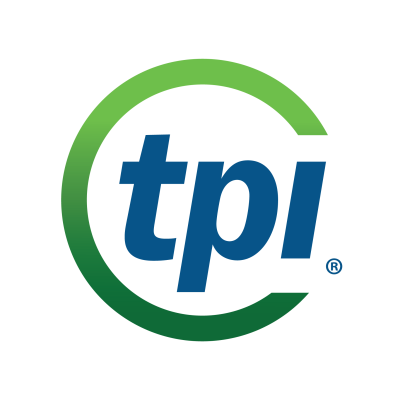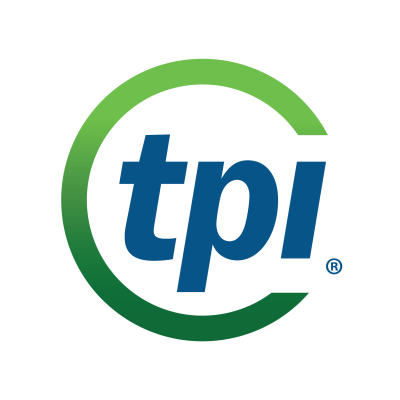Advances in Rotor Blades: Day 1 - 27/08/2025
7:30 - 7:45
Registration and Welcome Coffee
8:30 - 9:30
Workshop: Mastering Aeroelasticity in 100m+ Rotor Blades: Challenges, Models & Mitigation
Galih Bangga -
Wind Energy Aerodynamics Specialist,
DNV Services UK Limited
As rotor blades exceed 100 meters, aeroelastic phenomena become increasingly critical. This workshop explores the interaction between aerodynamic loads and structural dynamics — and how to model, predict, and mitigate aeroelastic instabilities in ultra-long blades. Through real-world examples and simulation cases, participants will dive into the design trade-offs, modeling approaches, and testing strategies that define the next generation of large rotor blades.
- Understanding Aeroelastic Effects in Very Long Blades
- Coupled aerodynamic and structural behaviour
- Key failure modes: flutter, divergence, dynamic instabilities
- Modeling Approaches and Tools
- Reduced-order vs. high-fidelity simulation
- Validation methods: wind tunnel, full-scale testing, operational data
- Design Strategies to Address Aeroelastic Challenges
10:00 - 10:15
Opening remarks by Chairperson
Dr. Alexander Krimmer -
Senior Materials Engineer,
TPI Composites Germany GmbH
10:15 - 10:45
New Methods in Full Scale Rotor Blade Fatigue Testing
David Melcher -
Research Associate Department Rotor Blades,
Fraunhofer Institute for Wind Energy Systems IWES
- Precise evaluation of fatigue loads
- Better agreement of test and field loads
- Elliptical biaxial test excitation for better load coverage

David Melcher
Research Associate Department Rotor BladesFraunhofer Institute for Wind Energy Systems IWES

10:45 - 11:15
Validation of a fatigue design tool throughout full scale fatigue testing of rotor blades
Ulrike Kersten -
Senior Engineer,
TPI Composites Germany GmbH
- Fatigue design concept
- Damage heat maps
- Test vs. prediction
11:15 - 12:00
Coffee Break and Networking
12:00 - 12:30
Aeroelastic-Based Control for a Flexible Wind Turbine Blade and its Innovations
Dr. Jingwei Zhou -
Project manager/ Senior researcher,
Goldwind Frontier Technology (Yancheng) Co., Ltd
- The principle of nonlinear bend–twist deformation in flexible blades;
- Motivation for the development of an aeroelastic-based controller;
- On-site experimental studies and validation;
- Optimization with constraints and a holistic design approach.

Dr. Jingwei Zhou
Project manager/ Senior researcherGoldwind Frontier Technology (Yancheng) Co., Ltd

12:30 - 13:00
ONE-CLICK-BLADE – Parametrized Quick Optimization of Wind Blade Designs using FE and Analytical Methods
Bryant Neira Suarez -
Co-Founder & Chief Engineer,
VERMATIQ GmbH
- Problem Description: Challenges in rotor blade design
- Current Challenges: What prevents a fully parametrized blade design?
- Solution: Rotor blade design analysis at just one click – including all computational design requirements according to DNV-ST-0376
- Outlook: Blade Design Optimization using invertible neural networks
13:00 - 14:30
Networking Luncheon
14:30 - 15:00
Blade segmentation: a game changer reality
Edo Kuipers -
Engineering Manager,
We4Ce - TRES4
- Overcoming blades growth limitations
- Robust and reliable solutions: advanced validation strategy
- Representative case studies
15:00 - 15:45
Panel discussion: Beyond the Limits: Structural Uncertainty in Large Blade Design
Galih Bangga -
Wind Energy Aerodynamics Specialist,
DNV Services UK Limited
Edo Kuipers - Engineering Manager, We4Ce - TRES4
As rotor blades continue to scale, current tools face limits. Experts discuss structural challenges, root design issues, and modeling gaps in ultra-large blades.
- Structural mechanics: What we still don’t fully understand and structural modelling limitations for >100m blades
- Growing blades, growing gaps: Scaling effects and hidden loads
- Load assumptions vs. real-world behaviour
- Blade root challenges: Complex stress states and material interfaces
- Scaling effects and unforeseen interaction effects
- Towards better prediction: Needs for validation, testing, and model improvement
15:45 - 16:15
Coffee Break and Networking
16:15 - 16:45
SteelBlades for Wind Turbines: Solving the Recycling and Sustainability Challenge
Moritz Bäß -
Head of Modelling,
RWTH - Chair and Institute of Structural Mechanics and Lightweight Design
Lukas Kettenhofen - Head of Optimization, RWTH - Chair and Institute of Structural Mechanics and Lightweight Design
• Preliminary design concept
• Fast and scalable manufacturing
• Design challenges

Moritz Bäß
Head of ModellingRWTH - Chair and Institute of Structural Mechanics and Lightweight Design


Lukas Kettenhofen
Head of OptimizationRWTH - Chair and Institute of Structural Mechanics and Lightweight Design

16:45 - 17:15
Blade Leading Edge Erosion – a constant in the wind energy?
Dr. Florian Sayer -
Business Development,
Fraunhofer IFAM
- Status Quo of Blade Leading Edge Erosion Research
- Differences of erosion in testing and during operation
- Outlook: A path to overcome leading edge erosion
17:15 - 17:30
Closing remarks
17:30 - 18:30
Workshop | Blade Root Failures in Aging Turbines — Repair Methodologies and Implications for Future Design
Edo Kuipers -
Engineering Manager,
We4Ce - TRES4
As wind turbines increase in age and size, structural issues at the blade root interface — particularly loose or failing bushings — are emerging as a critical reliability concern. This workshop explores a validated onsite blade root repair process and goes further by identifying design lessons that could inform next-generation blade root concepts.
- Root Cause and Onsite Repair Methodology
Failure Diagnostics:
- Systematic Root Cause Analysis: ultrasonic NDT, strength testing, damage patterns
- Common failure modes in root bushings across turbine generations
Validated Repair Approach:
- Application of the Re-FIT bushing and patented Front Infusion Technology (FIT)
- Material interface behavior and bonding strategies
- Design Considerations for Future Blade Roots
Re-thinking the Blade Root Interface:
- Implications of recurring bushing failures for root geometry, materials, and joining concepts
- Opportunities for modular, maintainable, or replaceable root sections
- Designing for maintainability: How to build repairability into future blades
Material & Manufacturing Strategies:
- Lessons from FIT for potential OEM integration in serial blade manufacturing
- Hybrid bonding techniques and localized reinforcement zones
Certification & Testing Needs
19:00 - 19:00
Evening Get-Together:
Join us for an informal evening get together at Emma am See where some refreshing drinks and a nice barbecue buffet will be waiting for you! You are not only visiting an architecturally awardwinning monument, but meeting your peers in a relaxed atmosphere, exchanging business cards. and reviewing the first conference day.















